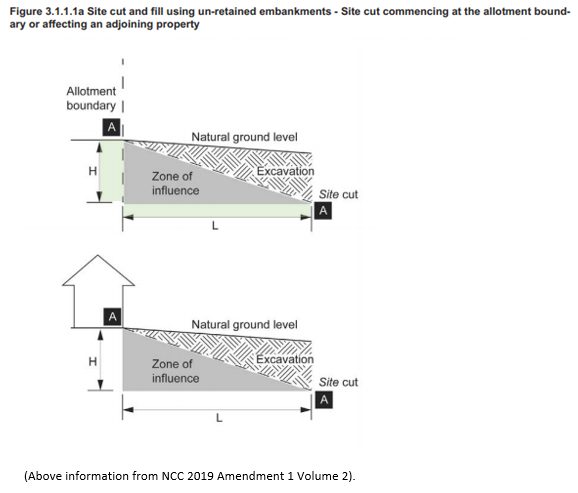We often get asked this question in our industry. The Building Code of Australia breaks down the requirements for Class 1a buildings as shown below. For a proposed concrete slab on ground the finished floor level (FFL) is required to be 100mm above the external finished ground level (FGL) for low rainfall intensity areas such as sandy, well-draining soil. Over the first 1m of the external finished ground level the fall is required to be 50mm over the 1m setback. This creates a gradient in which water will fall away from the building.
3.1.3.3 Surface water drainage
Surface water must be diverted away from Class 1 building as follows:
(a) Slab on ground – finished ground level adjacent to buildings:
the external finished surface surrounding the slab must be drained to move surface water away
from the building and graded to give a slope of not less than (see Figure 3.1.2.2) –
(i) 25mm over the first 1m from the building in low rainfall intensity areas for surfaces that are
reasonably impermeable (such as concrete or clay paving); or
(ii) 50mm over the first 1m from the building in any other case.
(b) Slab on ground – finished slab heights:
the height of the slab on ground above external finished surfaces must be not less than (see
Figure 3.1.3.2) –
(i) 100mm above the finished ground level in low rainfall intensity areas or sandy, well-drained
areas; or
(ii) 50mm above impermeable (paved or concreted areas) that slope away from the building in
accordance with (a); or
(iii) 150mm in any other case.

For soil further than the 1m setback from the building, the slope of the natural ground level (NGL) is also determined by the type of soil on site. The table shows what type of embankment slope is needed in relation to soil type. For sandy soil, the H value is 1 and the L value is 2. Resulting in a 1:2 angle of soil which is in the ‘zone of influence’. This zone, is the area of soil which is required to not be excavated in order to keep the soil stable within this zone.


